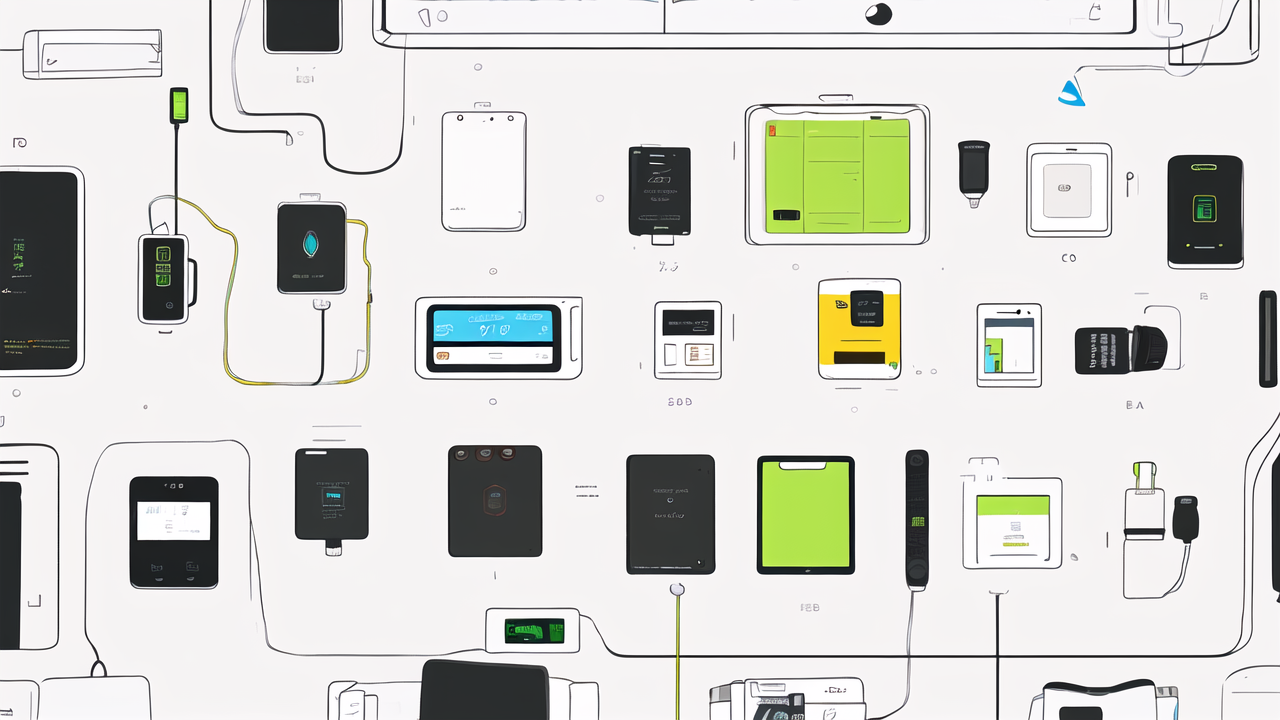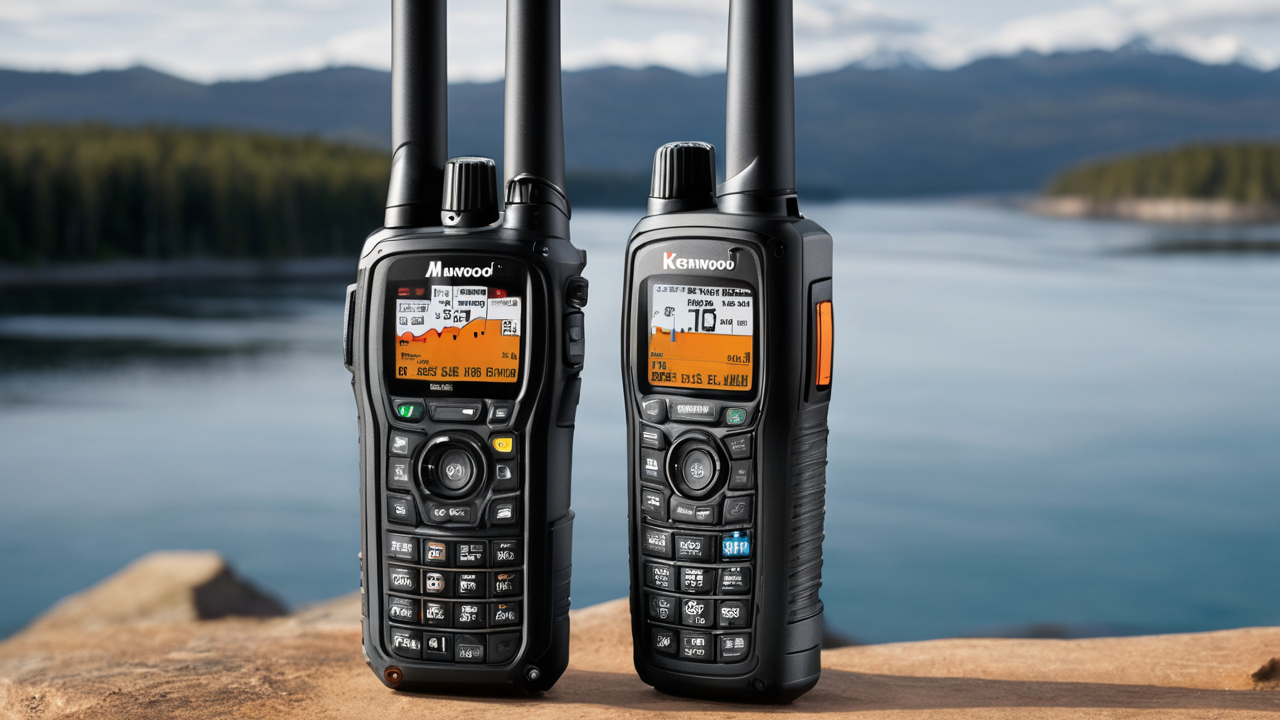Understanding Long-Range Walkie Talkie Technology
The Evolution of Walkie Talkie Range
Walkie talkies have come a long way since their inception. Early models had limited range and poor sound quality. Today's long-range walkie talkies can cover vast distances with crystal-clear audio. This evolution is due to advancements in radio technology and signal processing.

Modern devices use sophisticated antennas and powerful transmitters. They also employ digital signal processing to enhance clarity. Some high-end models can now reach up to 35 miles in ideal conditions. This is a far cry from the mere few hundred yards of early versions.
The push for greater range has driven innovation in battery life and power management. Manufacturers now focus on balancing power output with energy efficiency. This ensures users can communicate over long distances without frequent recharging.
Key Features That Define a Long-Range Walkie Talkie
Long-range walkie talkies stand out due to several key features:
- High-power output: Typically 2-5 watts for consumer models
- Advanced antennas: Often detachable for customization
- Multiple channels: Usually 22 or more to avoid interference
- NOAA weather alerts: For safety in outdoor activities
- Long battery life: Often lasting 8-12 hours of active use
- Rugged construction: Water-resistant or waterproof designs
- Clear sound quality: With noise-canceling technology
- GPS functionality: In some high-end models for location sharing
These features combine to create devices that are reliable in various conditions. They cater to both professional users and outdoor enthusiasts. The best long-range walkie talkies balance all these aspects effectively.
Regulatory Standards in the U.S.
In the United States, the Federal Communications Commission (FCC) regulates walkie talkies. The FCC sets limits on power output and frequency usage. This ensures fair access to radio waves and prevents interference.
For consumer walkie talkies, the FCC allows two main types:
- Family Radio Service (FRS): No license required, limited to 2 watts
- General Mobile Radio Service (GMRS): License required, up to 5 watts allowed
GMRS offers longer range but requires a simple licensing process. Many modern walkie talkies are dual-service, supporting both FRS and GMRS channels. Users must be aware of these regulations to use their devices legally.
The FCC also mandates specific frequency bands for these services. This helps prevent interference with other radio services. Manufacturers must comply with these standards to sell their products in the U.S.
Top Brands in the Long-Range Walkie Talkie Market
Leading Manufacturers and Their Market Position
Several brands dominate the long-range walkie talkie market. Each has its strengths and target audience. Here are some top contenders:

- Motorola: Known for reliability and professional-grade quality
- Midland: Popular among outdoor enthusiasts for rugged designs
- Cobra: Offers a good balance of features and affordability
- Kenwood: Favored in industrial and commercial settings
- Baofeng: Budget-friendly option with surprising range
Motorola often leads in market share due to its strong reputation. Midland and Cobra compete closely in the consumer segment. Kenwood focuses more on professional users. Baofeng has gained popularity as a cost-effective alternative.
Market position often correlates with price and feature set. High-end brands like Motorola command premium prices. Others like Baofeng attract budget-conscious buyers. The middle ground is highly competitive, with brands constantly innovating.
Innovations That Set the Top Brands Apart
Top brands differentiate themselves through innovative features. These can include:
- Advanced battery technology for longer life
- Dual-power modes for flexibility in range and battery usage
- Integration with smartphones for enhanced functionality
- Improved water and dust resistance ratings
- Voice activation for hands-free operation
- Group call features for team communication
Motorola, for instance, offers Bluetooth connectivity in some models. This allows for wireless headset use. Midland has models with up to 50-mile range claims in ideal conditions. Cobra includes recharging cradles with some units for convenience.
These innovations address specific user needs. They aim to make communication more efficient and reliable. Brands that consistently introduce useful features tend to maintain their market positions.
Consumer Preferences and Brand Loyalty
Brand loyalty in the walkie talkie market is strong. Users often stick with brands they trust. This is particularly true for professional users who rely on their devices daily. Factors influencing loyalty include:
- Reliability: Consistent performance in various conditions
- Durability: Ability to withstand rough handling and harsh environments
- Customer support: Responsive service and warranty fulfillment
- Ecosystem: Compatibility with accessories and other devices
- User interface: Intuitive controls and easy operation
Motorola and Kenwood benefit from strong loyalty in professional sectors. Midland and Cobra have dedicated followings among outdoor enthusiasts. New entrants like Baofeng are building loyalty through affordability and community support.
Consumer reviews and word-of-mouth play significant roles in shaping preferences. Online communities and forums often influence buying decisions. Brands that engage with these communities tend to build stronger loyalty.
Making the Right Choice: A Buyer's Guide to Long-Range Walkie Talkies
Assessing Your Specific Needs
Choosing the right long-range walkie talkie starts with understanding your needs. Consider these factors:

- Range required: Urban use needs less range than wilderness adventures
- Frequency of use: Occasional vs. daily use affects durability needs
- Environment: Weather conditions and terrain impact device choice
- Group size: Number of users influences channel and privacy code needs
- Battery life: Length of typical use sessions determines battery requirements
- Budget: Balance features with cost constraints
For casual hikers, a mid-range FRS device might suffice. Professional users may need GMRS-capable units with advanced features. Families might prioritize ease of use and affordability.
It's crucial to be realistic about range needs. Advertised ranges are often based on ideal conditions. Real-world performance can be significantly less. Consider the typical environments where you'll use the device.
The Importance of Reliability and Durability
Reliability and durability are critical for long-range walkie talkies. These devices are often used in challenging conditions. They need to work when other communication methods fail. Key aspects include:
- Water resistance: Look for IPX ratings for water protection
- Shock resistance: Ability to withstand drops and impacts
- Temperature tolerance: Functionality in extreme hot or cold conditions
- Battery performance: Consistent power output over time
- Signal clarity: Clear audio even at long ranges or in noisy environments
Motorola and Kenwood are known for their rugged, reliable designs. They often meet military specifications for durability. Midland offers models with excellent weather resistance for outdoor use.
Investing in a reliable device can be cost-effective in the long run. It reduces the need for frequent replacements. It also ensures the device works when you need it most, which can be crucial in emergency situations.
Evaluating Cost vs. Quality: A Value Propositional Analysis
When choosing a long-range walkie talkie, balance cost with quality. Higher price often correlates with better performance and durability. However, it's possible to find good value at various price points. Consider these aspects:
- Feature set: Ensure you're paying for features you'll actually use
- Build quality: Higher-priced units often use better materials
- Brand reputation: Established brands may offer better support and reliability
- Warranty: Longer warranties can indicate manufacturer confidence
- Total cost of ownership: Include batteries, chargers, and potential repairs
Budget options like Baofeng offer surprising capabilities at low prices. Mid-range brands like Cobra provide a good balance of features and cost. Premium brands like Motorola justify their higher prices with superior performance and durability.
Consider the device's lifespan and intended use. For occasional use, a mid-range option might offer the best value. For daily professional use, investing in a high-end model could be more cost-effective long-term.
Remember, the best value isn't always the cheapest option. It's the one that best meets your needs at a reasonable price point. Carefully weigh features, quality, and price to find your ideal long-range walkie talkie.


